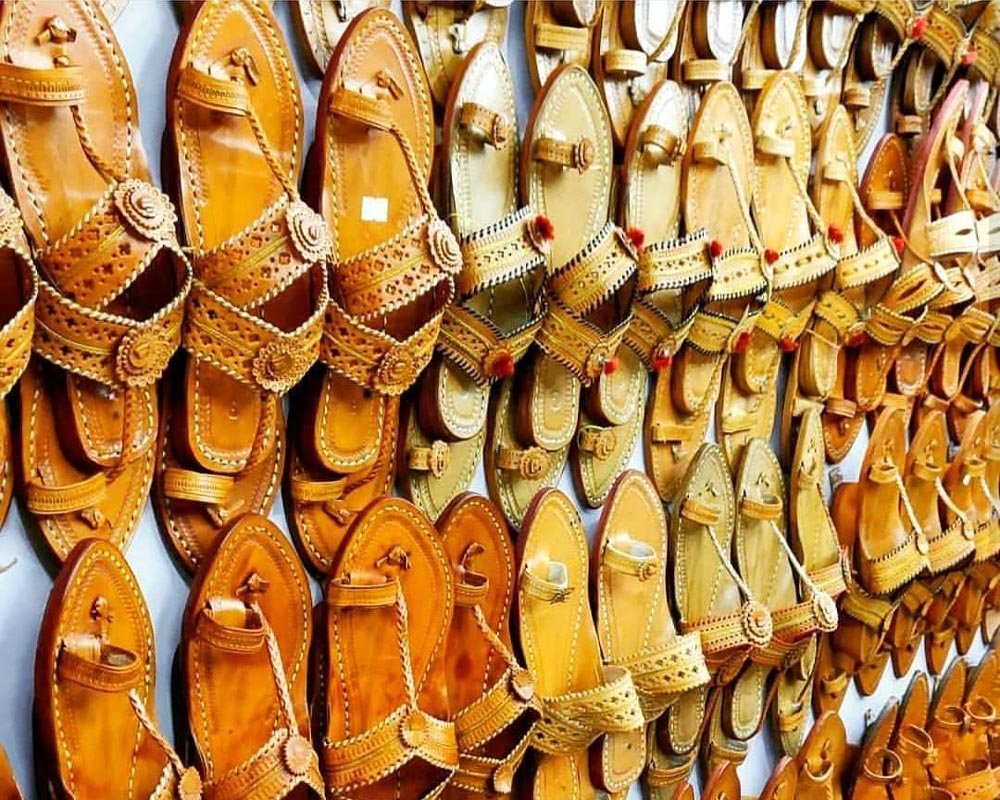Kolhapuri Sandal Controversy Sparks Global Debate Over Design Rights
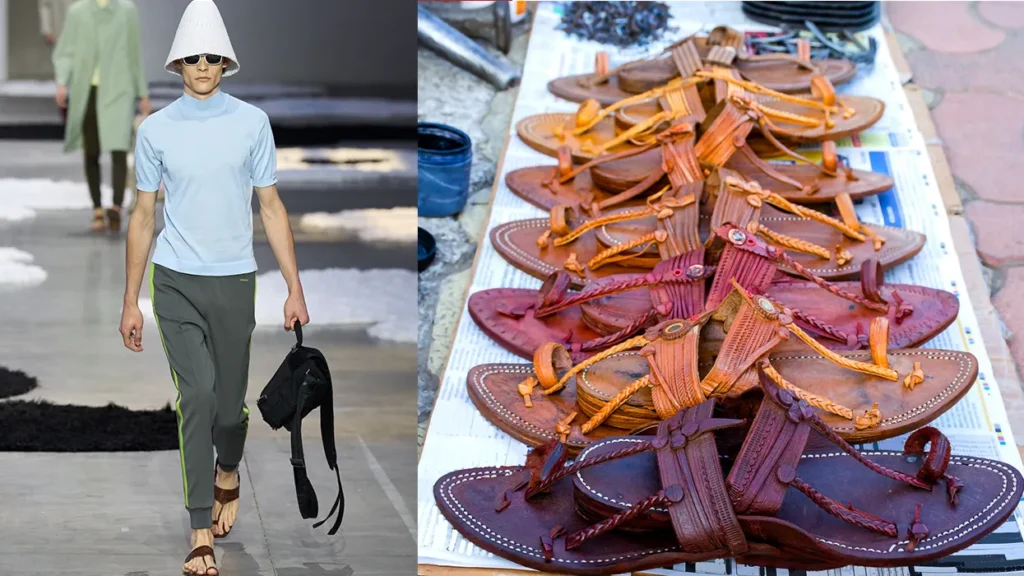
The Kolhapuri sandal controversy has thrust the quaint town of Kolhapur in western India into the global spotlight. Thousands of skilled artisans are accusing luxury fashion house Prada of replicating their iconic handcrafted footwear designs without credit or compensation. As this cultural appropriation claim gains momentum, the voices of India’s traditional shoemakers are finally echoing beyond their workshops.
Generations of Kolhapuri Craftsmanship at Risk
In a dimly lit workshop, the rhythmic tapping of hammers echoes as Sadashiv Sanake, 58, diligently shapes leather into the renowned Kolhapuri sandals. “I learnt this craft during my childhood,” he says, as he carves intricate patterns into the leather. Each day, he manages to produce about eight to ten pairs of these sandals, which are sold locally for just $8 to $10.
Kolhapuri sandals are not merely footwear; they are the result of generations of artisanal skill. Yet, only about 5,000 artisans remain in the trade, struggling to sustain a livelihood amid increasing costs, poor working conditions, and competition from mass production.
When High Fashion Imitates Tradition: The Kolhapuri Sandal Controversy
The dispute erupted when Prada unveiled a collection of luxury leather sandals at Milan Fashion Week that bore a striking resemblance to the Kolhapuri design. Though the brand later acknowledged the design’s Indian roots, local artisans and cultural experts viewed the move as a textbook case of cultural appropriation.
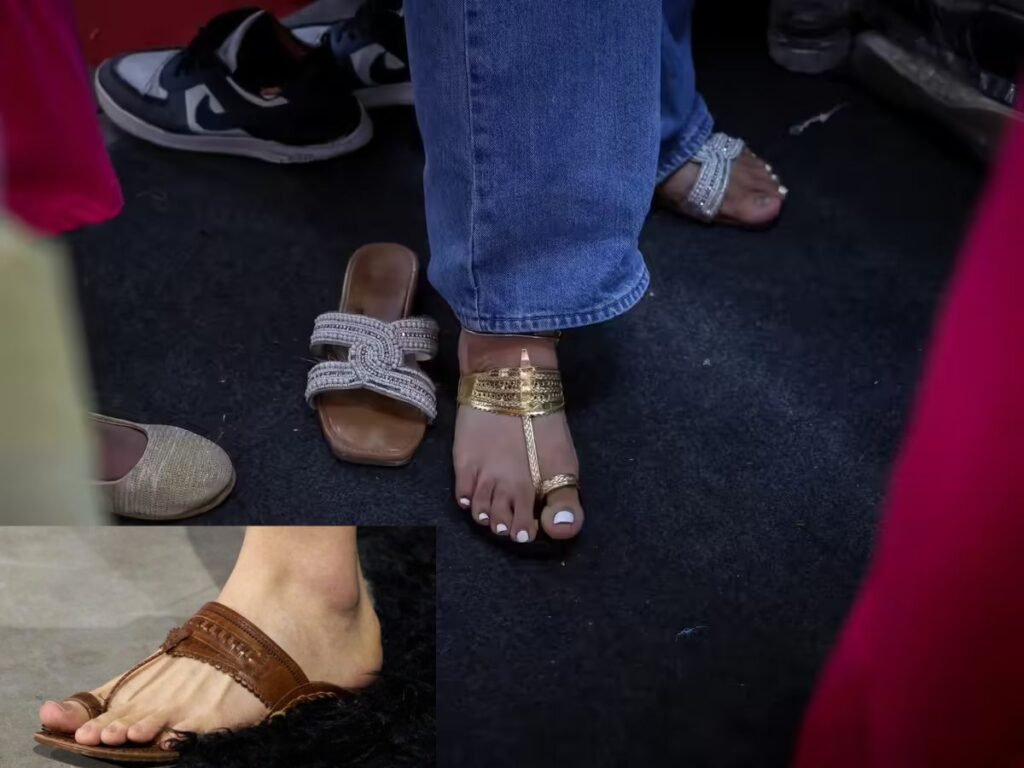
Kolhapuri sandal maker Mr. Sanake, upon seeing Prada’s designs, was astounded to learn that such sandals might retail for hundreds of pounds in international markets. “Do they have gold in them?” he asked mockingly.
Kolhapuri Sandal Controversy: A Legacy Spanning Centuries
The roots of Kolhapuri sandals trace back to the 12th century. Originally crafted by the Charmakar community, who traditionally worked with leather, these sandals gained recognition and royal patronage in the early 20th century under Chhatrapati Shahu Maharaj, a progressive ruler of Kolhapur.
According to the Maharashtra Chamber of Commerce, Industry and Agriculture (MACCIA), approximately 100,000 artisans across India are still engaged in this traditional craft. Despite this, the majority of these workers remain underpaid and undervalued.
Kolhapuri Sandal Controversy: Women Artisans Behind the Craft
Women artisans, like 60-year-old Sunita Satpute, play a crucial role in the production process, especially in engraving delicate patterns. “I was never educated. This is the only skill I know,” she says, revealing that she earns only about $4-5 a day. For this reason, her children are reluctant to continue the family trade.
Traditional Trade vs. Modern Challenges
In Kolhapur’s famous ‘Chappal Gully’, or sandal lane, storefronts line the streets, but many are struggling to stay open. Rising leather prices have made production more costly. Furthermore, the 2015 Maharashtra ban on cow slaughter has forced artisans to switch from cowhide to buffalo leather, which is more expensive and harder to source.
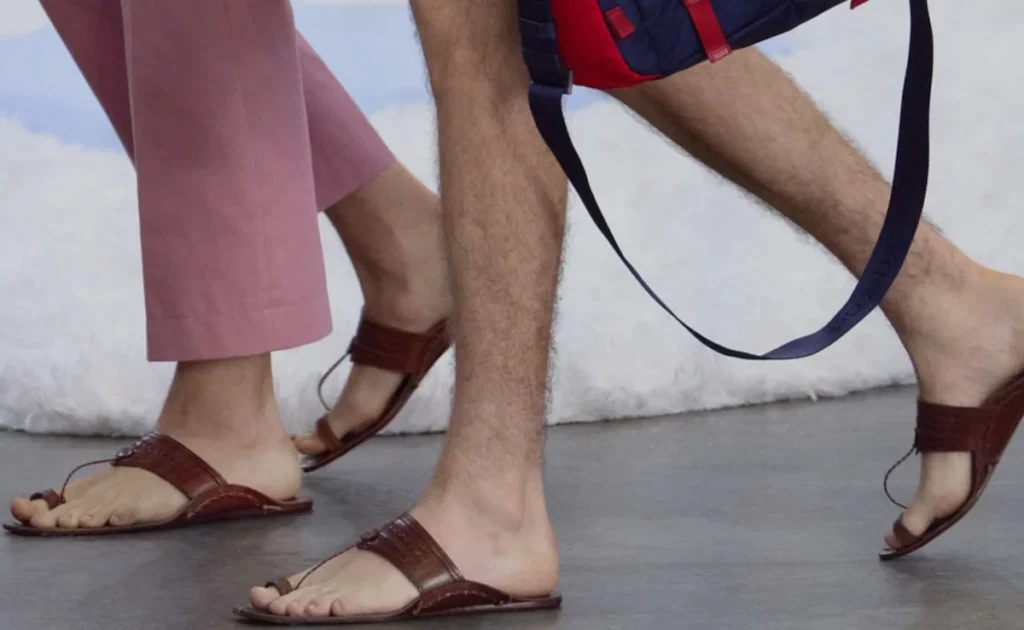
These challenges are compounded by the flood of synthetic replicas in the market, making it harder for authentic Kolhapuri sandals to compete. “Customers often can’t distinguish between genuine leather and synthetic copies,” explains Rohit Balkrishna Gavali, a second-generation shop owner.
Legal and Global Implications
In 2019, Kolhapuri sandals received the Geographical Indication (GI) tag, granting them legal protection within India. However, this protection does not extend globally. Legal experts argue that India can file a case under the WTO’s TRIPS agreement, but such measures are costly and difficult to enforce.
MACCIA President Lalit Gandhi plans to seek an international patent for the Kolhapuri design, aiming to create a precedent that protects traditional Indian crafts in global markets.
The Need for Ethical Recognition
Fashion designers and industry veterans argue that true change requires ethical and cultural recognition. “India must advocate for co-branding and royalty-sharing arrangements,” suggests fashion designer Ritu Beri. “Only by valuing our traditions can we prevent their exploitation.”
This sentiment resonates with artisans who hope for more than just temporary attention. They seek respect and a fair share of the profits generated from their designs.
Global Brands and Cultural Appropriation
This isn’t the first instance of international brands facing backlash over Indian craftsmanship. Techniques like Chikankari embroidery, Ikat weaving, and mirror work have long been used by luxury fashion houses without proper credit or collaboration with artisans.
“The artisans remain invisible, while brands thrive off their creativity,” Beri adds.
A Silver Lining?
Interestingly, the controversy may have inadvertently increased demand for Kolhapuri sandals. Gavali notes a spike in international orders, particularly from clients in Dubai, the U.S., and Qatar. “Sometimes, controversy can actually help,” he remarks. “But we also want it to bring dignity and better compensation.”
Toward a Collaborative Future
Legal action has already been initiated, with a plea filed in an Indian high court seeking compensation from Prada and a possible collaboration overseen by judicial authorities. While Prada has acknowledged discussions with MACCIA, the outcome remains uncertain.
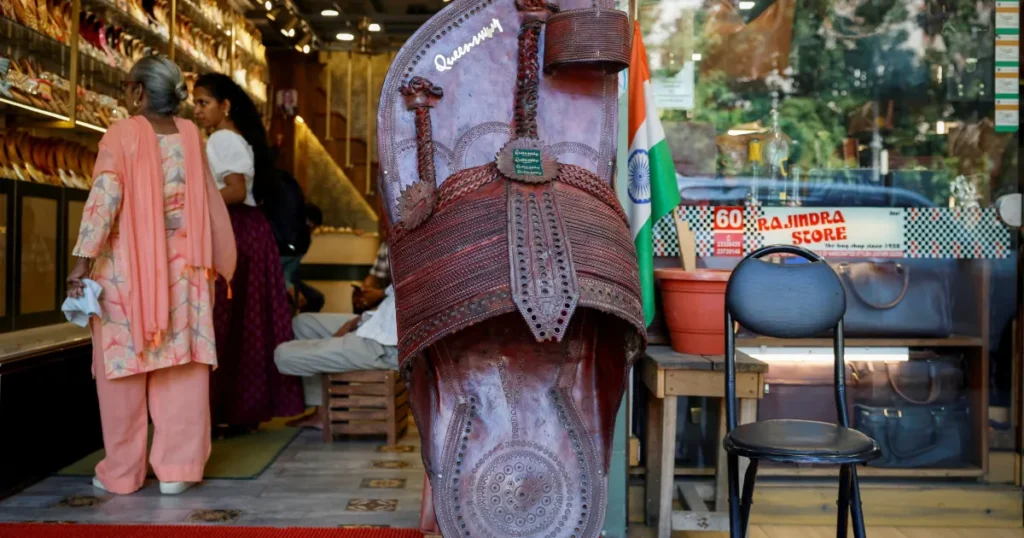
However, artisans like Sadashiv and Sunita remain hopeful. With international attention, there may finally be a chance for meaningful recognition of their heritage and hard-earned craft.
Conclusion
The Kolhapuri sandal controversy has ignited a critical conversation about cultural ownership, global fashion ethics, and the dignity of traditional artisans. As the legal and moral debate unfolds, the focus must remain on preserving this invaluable legacy and ensuring that the hands behind the heritage are not left behind.
